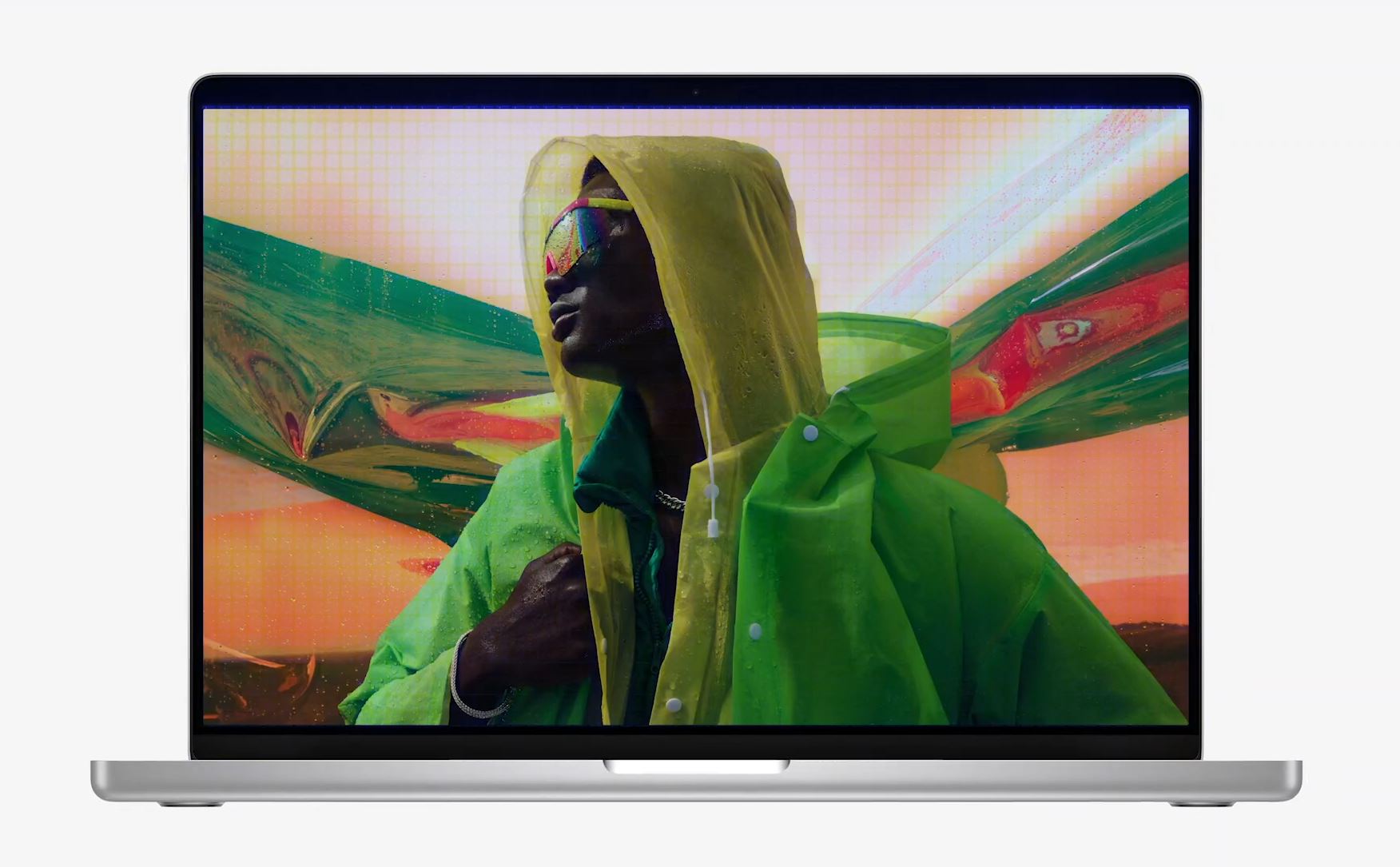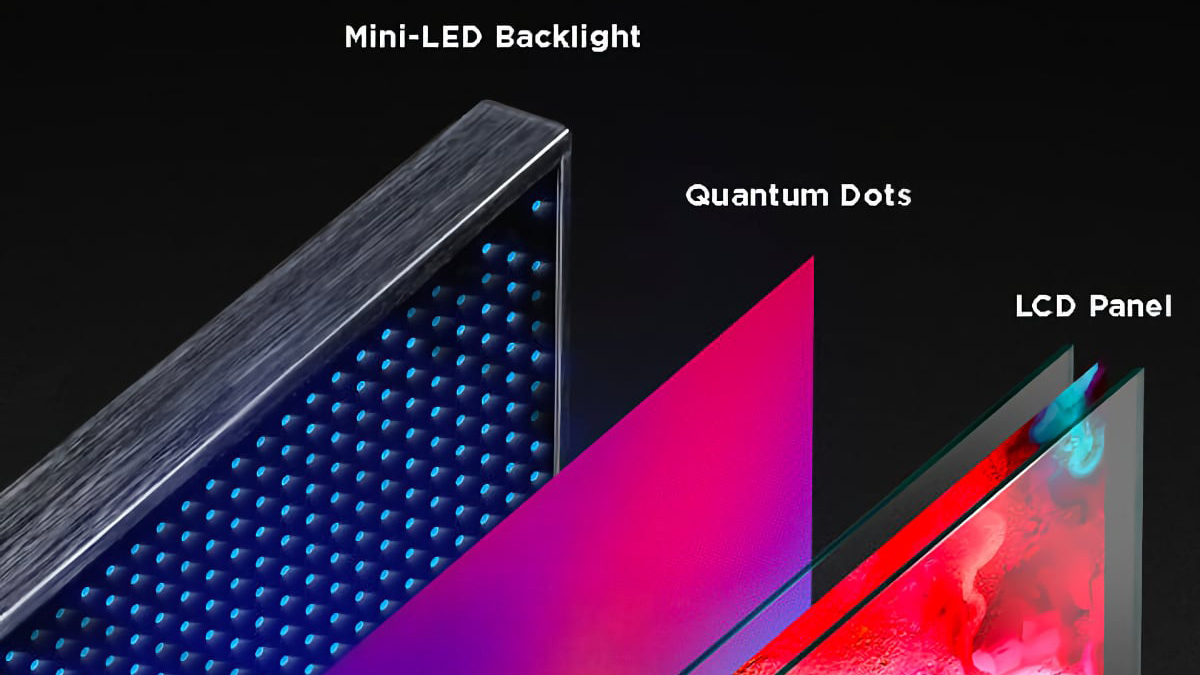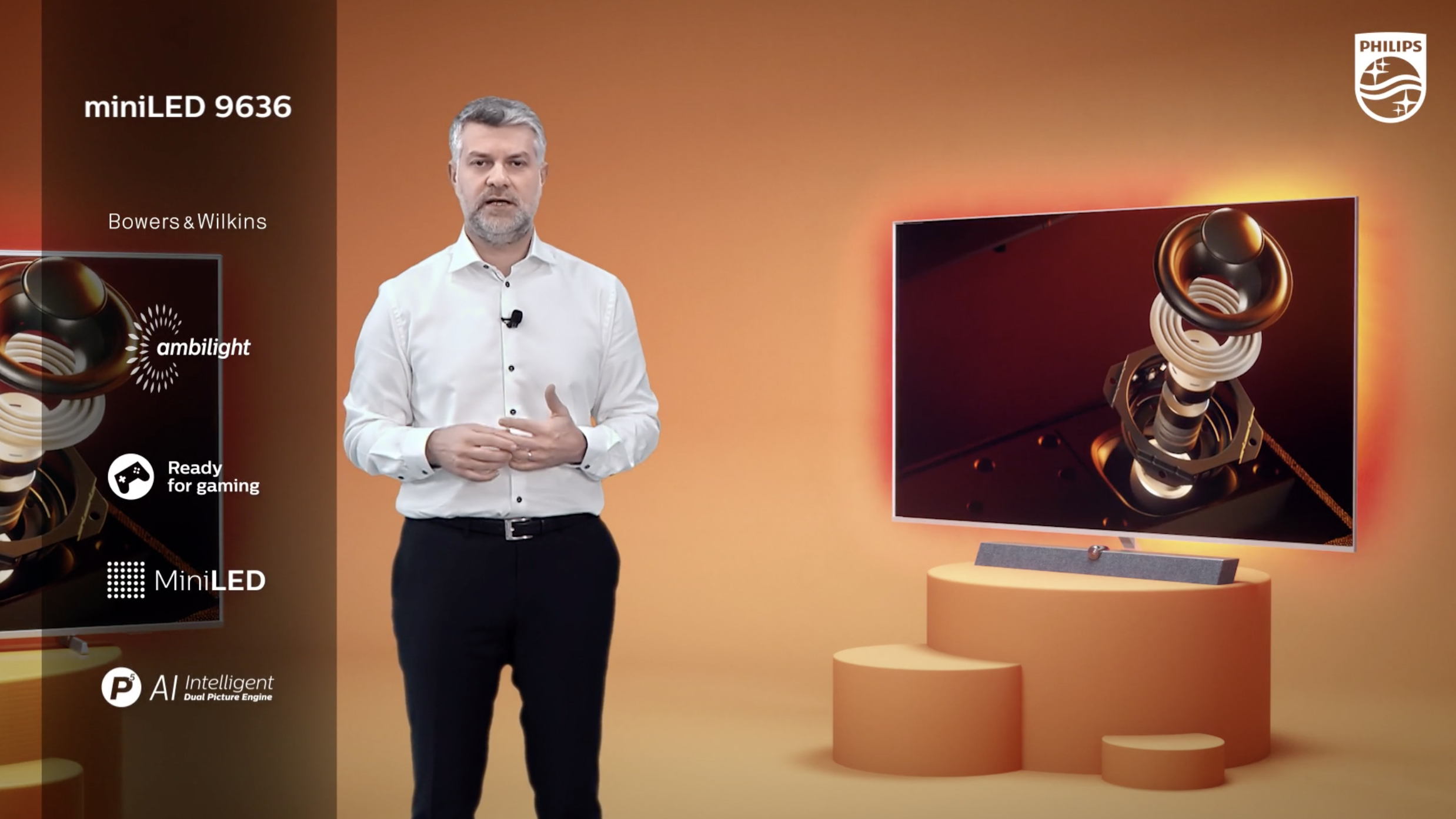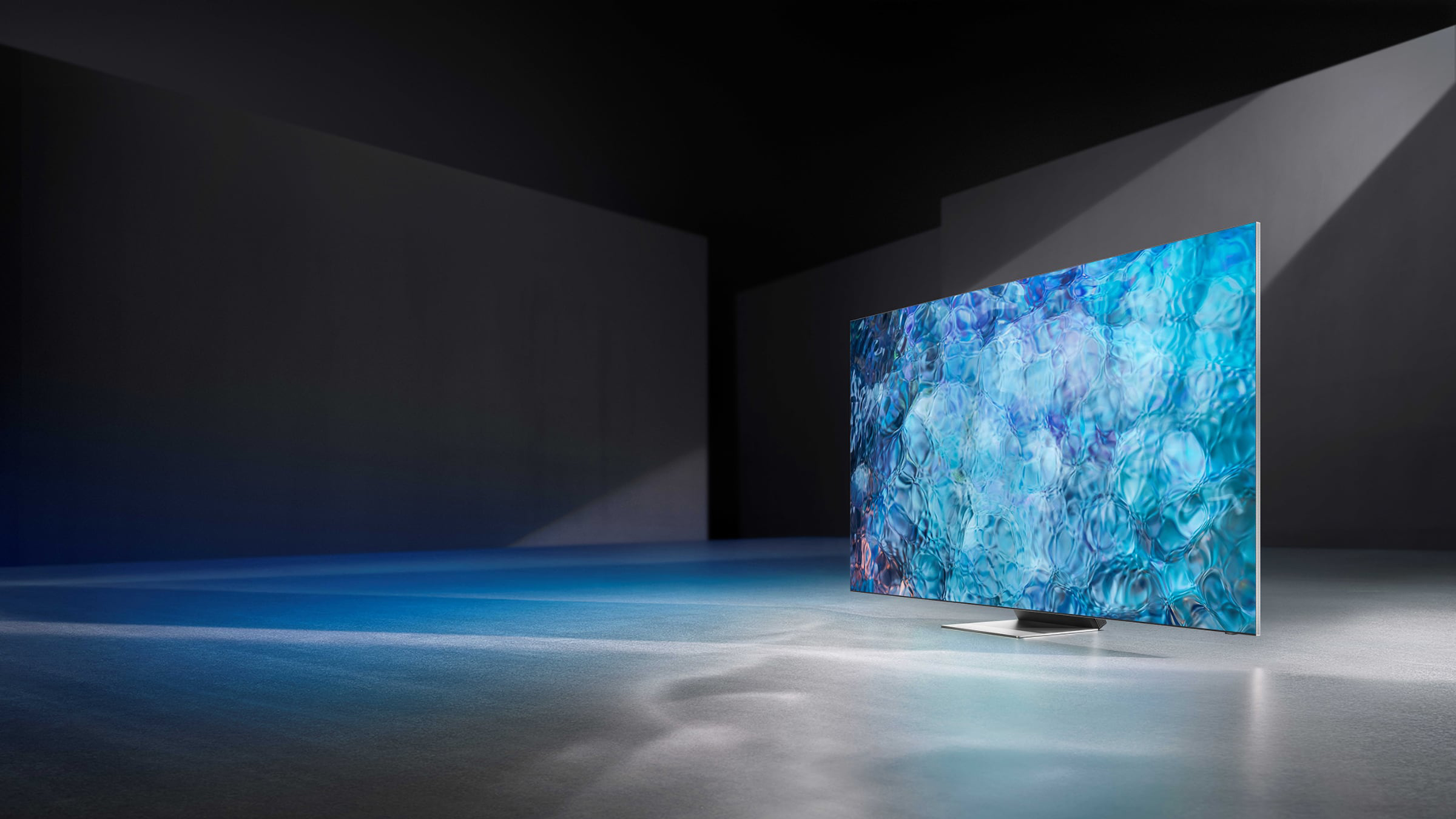Mini LED is a TV term that describes the screen tech you’ll find inside many of the best TVs of 2021. Interestingly, it’s cropping up in other devices now, too, like Apple’s new MacBook Pro 14-inch (2021). But what is Mini LED? And is it something you need to make sure you have next time you buy a TV or a new laptop?
Mini LED is mostly found in TV displays. Nowadays most of the major TV makers, like Philips, TCL, LG and Samsung, all have Mini LED TVs available to buy or they’re building new ones with Mini LED’s backlight tech inside them.
Some brands are even combining Mini LED with other kinds of new tech. For example, LG's Mini LED TV range of 'QNED' screens are now available worldwide. These TVs have both LG’s NanoCell LCD and Mini LED backlighting for the first time.
But although you’ll find Mini LED in many of today’s newest TVs, you'll find it in other devices with a screen as well. For example, rumors suggest it might also be used in the upcoming Nintendo Switch 2. Apple also uses Mini LED tech in its all-new MacBook Pro 14-inch (2021) and its new iPad Pro with reports suggesting it could be added to Apple's MacBook Air 2022 and new MacBook Pros as well.
Now Apple is actively adding Mini LED to its latest products, we can expect to see it in even more devices beyond TVs from other brands in the future. What we’re saying is, it’s a very exciting time for Mini LED tech and if you’re buying a new TV, you need to scrub up on your knowledge.
That’s where you’ll find Mini LED. But how does it work and how does it impact your viewing experience? In the guide below, we’ll cover the technical details of Mini LED, as well as the big question: do you really need a Mini LED TV? Read on to find out whether this new TV tech is right for you and whether you should keep an eye out for it in your next laptop purchase, too.

- What is OLED? The TV panel tech explained
Now onto what the tech does. As you might guess from the name, Mini LED shrinks the LED modules that provide backlighting to LCD screens.
LCD pixels can’t illuminate themselves – although OLED can – so they need a light source behind them that can shine light through. This is what creates the necessary brightness and color. Because of this extra layer of backlighting, the pixels in an LCD display can never be turned completely off.
How does this impact your viewing experience? It’s best to compare it to an LCD screen. Blacks on an LCD screen don’t just lack the inky quality of their OLED equivalents, but if an LCD TV’s backlight is poorly implemented and controlled, there can be noticeable unevenness to the way the screen describes what should be uniform areas of black.
A good example is if you imagine the end credits of most movies. There’s a black screen with white text scrolling up it. When you’re watching on an LCD TV, it’s normal to see a halo of light around the words, or to let its backlight show ‘bleed’ from the corners of the screen. The result is whatever should be black is now more of a cloudy grey.
We know that no one ever bought a TV solely for how it handles the end credits of a film. But this kind of messy picture quality is what has increasingly made LCD technology look second class compared to its shiny OLED competitor.
However, there might still be a way for LCD technology to reassert itself among the best TVs – and that’s through Mini LED.

What is Mini LED?
Simply put, Mini LED is a more efficient, and more effective way of backlighting an LCD screen.
Officially a diode no bigger than 0.2mm can be classed as ‘mini’ – but this is the consumer electronics industry we’re dealing with here, and you can expect the word ‘mini’ to be used quite loosely. The basic principle, though, is that smaller LED diodes allow for more LED diodes.
Fitting more, and smaller, LED diodes behind the LCD pixels means images can be brighter. It means backlighting control can be more targeted and precise. It should allow for better control, which ought to mean less backlight bleed and stronger contrasts.
Why does Mini LED matter?
If it’s deployed effectively, Mini LED backlighting should allow LCD panels to get much closer to OLED levels of performance than has been possible before. These theoretical advantages are pretty compelling.
And, of course, that’s without OLED’s perceived problems: LED/LCD technology has never been the subject of screen-burn scare stories, nor does it fall prey to the eventual but inevitable drop-off in performance that’s the price of the ‘organic’ element of OLED.
Of course, the success of Mini LED will come down to the way the technology is implemented. There’s a lot of variation in the performance of similarly priced, similarly specified LED-backlit LCD screens - you only have to have a quick glance at our numerous TV reviews to see that. And if some TVs are found wanting when it comes to controlling a few dozen backlight dimming zones, can they really be expected to be any better when they have control of what could be thousands?
Apple pursuing Mini LED for its 12.9-inch iPad Pro 2021, making for 600 nits of brightness, and its latest MacBook Pro 14-inch (2021) will only raise awareness and hype for the technology too.

Where can I buy a Mini LED TV?
Intrepid Chinese manufacturer TCL was quick out of the blocks in incorporating the technology into its screens.
TCL fans can opt for the 6-Series QLED with Mini LED in the US – or the upcoming C825 QLED in the UK, which is set to launch at £1,099 for its smallest 55-inch size.
The brand has also recently-unveiled the X925 and X925 Pro, it's next slate of Mini LED TVs. We've already reviewed the TCL X925 Mini LED 8K TV and awarded it 4.5 out of 5 stars for its exceptional Mini LED black levels, 8K screen resolution, Google TV interface and Integrated Onkyo soundbar.
However, other TV brands are now following suit. LG, Philips and Samsung have all announced Mini LED ranges for 2021.

LG’s Mini LED range – called ‘QNED’ – has immediately become its premium LCD offering, combining Mini LED with quantum dot technology. It’s positioned above the NanoCell LCDs that were previously the company’s most aspirational LCD TVs.
The QNED99 is the hero of the range. It’s an 8K, 120Hz television with full array local dimming (all the better to show off exactly what Mini LED is capable of). It’s available in 65-inch, 75-inch and 86-inch variants. The QNED95 swaps the 120Hz panel of the QNED99 for just 60Hz, but retains the 8K resolution and all the other technological highlights – the 86-inch size aside.
There are a couple of 4K QNED ranges that are similarly arranged. The QNED90 has a 120Hz panel in front of its Mini LED Full Array Local Dimming arrangement, while the QNED85 makes do with a 60Hz panel instead.
If some TVs are found wanting when it comes to controlling a few dozen backlight dimming zones, can they really be expected to be any better when they have control of what could be thousands?
Over at Samsung, ‘Neo QLED’ is the way the company is describing its Mini LED televisions for this year. Along with a ‘micro layer’ to guide the light of the Mini LEDs (perhaps as many as 5,000 individual diodes for a single screen) through the quantum dots, Samsung has developed its most precise dimming and power distribution algorithms to date.
All of which bodes well for the chances of the range-topping QN900A. This is an 8K 120Hz screen, available in 65-inch, 75-inch or 85-inch sizes. The QN800A retains the 8K resolution and the selection screen size options – it just doesn’t have quite the whistles-and-bells audio system of the QN900A.
The 4K flag for Samsung is flown by the QN95A and QN90A: these are both 120Hz panels, and both available in 50 in-inch, 55-inch, 65-inch, 75-inch and 85-inch screen sizes. The QN95A also features Samsung’s One Connect box, which takes all connectivity requirements away from the screen itself. There’s also the QN85A, which retains the 120Hz panel of its siblings but doesn’t have quite as many dimming zones or speaker drivers.
Philips, of course, has its unique selling point to bring to the Mini LED party: Ambilight. Both the 9639 and 9506 are available in 65-inch or 75-inch sizes, and both have four-sided Ambilight as well as Mini LED backlights. As with LG, Philips’ Mini LED TVs slot into the television series just below the pricier OLED ranges.

Should I buy a Mini LED TV?
Ultimately, there are a few factors that will determine the success (or otherwise) of individual Mini LED TVs.
The panel driver and video processing engine that’s fitted to the television, for instance, will have a huge say in the way the screen performs – and if they’re indifferent components, the sheer complexity of the Mini LED arrangement could conceivably create more, rather than fewer, backlighting and contrast issues.
Now we're nearing the end of 2021, we're looking forward to seeing what the next year will bring for Mini LED and if it'll be a key focus of the biggest names in TV tech. It'll also be interesting to hear from the top TV makers about how the Mini LEDs that are already out in the world have performed so far. Only then will we know if Mini LED tech is both effective and worth the money.
from TechRadar - All the latest technology news https://ift.tt/2ZdjRRo








No comments:
Post a Comment